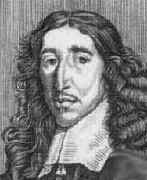Person: De Witt, Jan

Jan de Witt was a Dutch mathematician and statesman who wrote on geometry and finance.
Mathematical Profile (Excerpt):
- De Witt was an associate of van Schooten and lived for a while in his house.
- His most important work Elementa curvarum linearum Ⓣ(Elements of curves) (1659-61) was finished in 1649, and was the first systematic development of the analytic geometry of the straight line and conic.
- It was published by van Schooten as part of his edition of Descartes' Géometrie (1660).
- In 1650 de Witt was appointed Pensionary of Dordrecht, the leader of Dordrecht's deputation in the government of Holland.
- As leader of Holland, de Witt applied his mathematical knowledge to the financial and budgetary problems of the republic.
- He wrote The Worth of Life Annuities Compared to Redemption Bonds which applied probability to questions of state finance.
- De Witt brought about peace with England in 1654 and after this he was extremely successful in bringing prosperity to Holland.
- When war broke out again with England in 1665 de Witt was able to bring about a very satisfactory settlement at the Treaty of Breda (1667).
- In 1672 France invaded and there were demonstrations against de Witt.
- When Jan came to visit Cornelius in prison they were attacked and killed by a large crowd.
- Let us look now at de Witt's major mathematical work, the Elementa curvarum linearum Ⓣ(Elements of curves).
- Let us point out that the word directrix was first used by de Witt and appears in this work.
- In the same letter Witt criticises Apollonius who, in his opinion, had made things much too complicated.
- De Witt read the proofs and had the final say regarding changes to what van Schooten produced.
Born 24 September 1625, Dordrecht, Netherlands. Died 20 August 1672, The Hague, Netherlands.
View full biography at MacTutor
Tags relevant for this person:
Algebra, Origin Netherlands
Thank you to the contributors under CC BY-SA 4.0! 

- Github:
-

- non-Github:
- @J-J-O'Connor
- @E-F-Robertson
References
Adapted from other CC BY-SA 4.0 Sources:
- O’Connor, John J; Robertson, Edmund F: MacTutor History of Mathematics Archive
